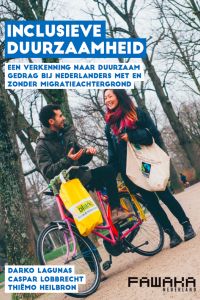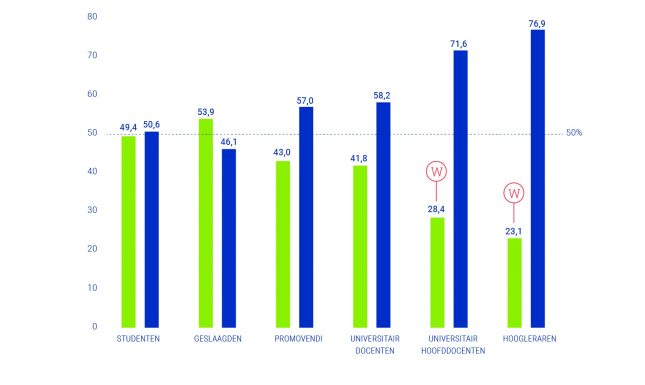On the Use of Categories in Diversity Research and Policies
How do we deal with the categories of human difference – such as gender, race, ethnicity, ability, etc. – that scholars, policy-makers and citizens use in a search for more equality? Jasmijn Rana reports on an inspiring online roundtable organized by the CADS Leiden ‘Diversity Research Cluster’.
The question of categories in diversity research and policies took centre stage in a roundtable organized by the ‘Diversity Research Cluster’ of the Leiden Institute for Cultural Anthropology and Development Sociology. Three Leiden University scholars had an online conversation with an audience of 70 participants on 16 November 2020 on the barriers and opportunities of the use of categories in ‘diversity and inclusion’ research and policies. Can we combat discrimination without using categories or do we actually need them?
Anthropology of Classification
The roundtable was kicked off by Professor Peter Pels, who presented a short overview of the anthropology of classification. Looking at racial classifications under Apartheid in South-Africa, he pointed out different analytical dimensions of the use of categories. Classifications, he explained, always have descriptive (what does the category refer to), constructive (for what purpose was the category introduced) and interventionist (what is the category meant to do) dimensions. Furthermore, Pels argued that classification has to be understood as a verb that is incomplete when one dimension is left out. It is important to take this analytical approach into account in current ‘diversity work’, because it urges us to move beyond describing ‘what is’, and instead always combine it with the social construction and historical meanings of classification of human difference.

Is Green Actually White?
That classifications of human difference are sometimes implicitly part of new categories, is what Dr. Shivant Jhagroe (FGGA – Public Administration) demonstrated with his research on ‘The Green Citizen’. In the move towards a more sustainable society, policymakers and professionals often imagine ‘Green citizens’ to be white, wealthy and well-educated.
Policies aimed at sustainability, energy-efficiency and ‘greening’ society are often implicitly aimed at this selective group of citizens, and only take their experiences into account. The underlying assumption that citizens that fall outside of this group are not interested in sustainability results in their exclusion from sustainable policies.
At the same time, Jhagroe highlights, grassroots initiatives that open up sustainable actions for a more diverse group of people are mushrooming around the globe. Initiatives such as ‘Gangsta Gardening’ in the US and ‘Fawaka NL’ and ‘Green Muslims’ in the Netherlands help us to rethink what it means to be green and what it means to be a citizen. For researchers and policymakers, it is crucial to understand the political work that categories do and to actively try to open up those categories, in order to produce more inclusive policy making.
Data on Diversity
To fight discrimination, the first step is to measure it. Dr. Aya Ezawa from Leiden University’s Diversity and Inclusion Expertise Office outlined how the promotion of equal opportunities at universities can only be established when we know and understand that opportunities are not equal at this moment. Ezawa demonstrates the power of quantitative data by looking back at how universities started collecting and sharing data on the number of women professors since 2005. The data show a ‘leaking pipeline’: while there are 43% female and 57% male doctoral students, this difference increases in the hierarchy of academic staff of assistant professors, associate professors and finally to a gap of more than 50% when we get to full professors. Moreover, surveys on salaries demonstrated that women are paid less for the same work.

The collection and presentation of these numbers provides a powerful tool to tackle gender inequality within universities. This proves to be much more difficult when it comes to ethnic/racial discrimination because unlike as in other countries, such as the United States, information on ethnic or racial background is not available in the Netherlands. Dutch Universities are currently looking into ways of mapping racial and/or ethnic background of their staff and students. American categories cannot be copied and pasted into the Dutch context, but the classification in Dutch statistics (such as CBS) has its pitfalls too. They often use place of birth, and place of birth of parents, which is then, problematically, divided in ‘western’ and ‘non-western’ migration backgrounds. Ezawa problematizes this further by noticing that ‘birthplace’ does not always represent ethnicity and that this means different things for Dutch nationals and international staff (and students).
Diversity: from buzzword to equality
A lively conversation among the participants ensued on the issues outlined by the three speakers, problematizing the contextualization of classification even further. At universities for example, if diversity policies aim at providing equal opportunities and being representative of our society, they have to be more explicit on how to attract a more diverse body of staff. As Ezawa argues, we then first of all need the data that can identify issues that need to be addressed. Using categories, imperfect as they are, is then justified as long as it can achieve more equality. It is important to think together what kind of categories we need and want, to create a more equal and just society. In this time and age, we have to be careful that “diversity” does not merely serve as a buzzword.
To conclude with the words of Sara Ahmed, quoted by Pels: “If the circulation of “diversity” is not to block (emancipatory) action, it has to re-attach the word to “histories of struggle against social inequalities” and help allocate resources to it”



0 Comments
Add a comment